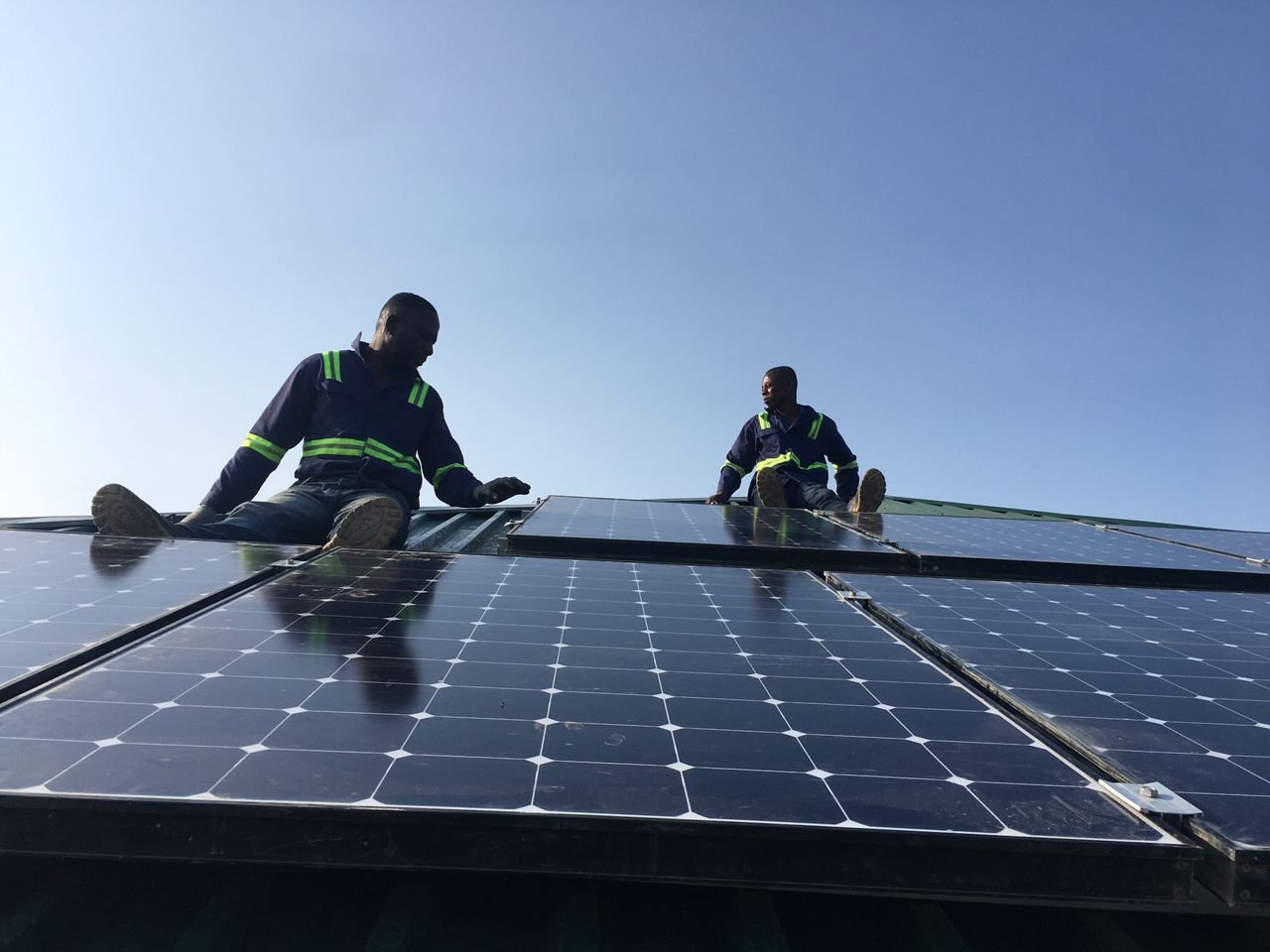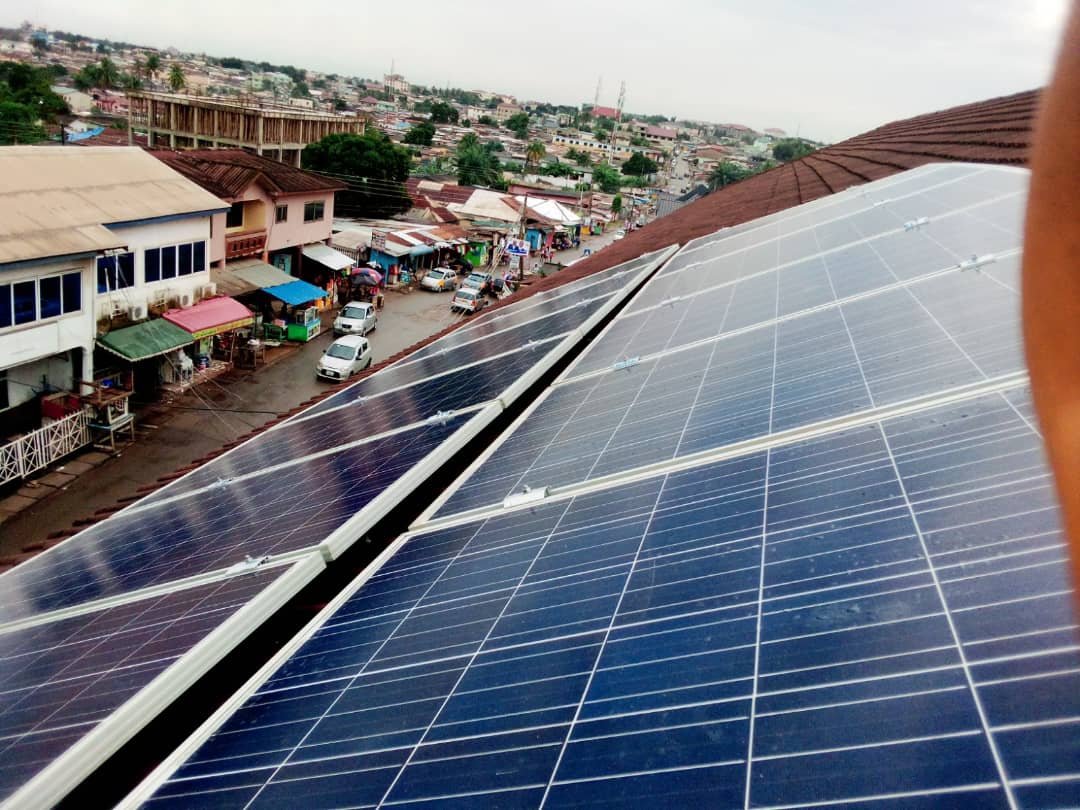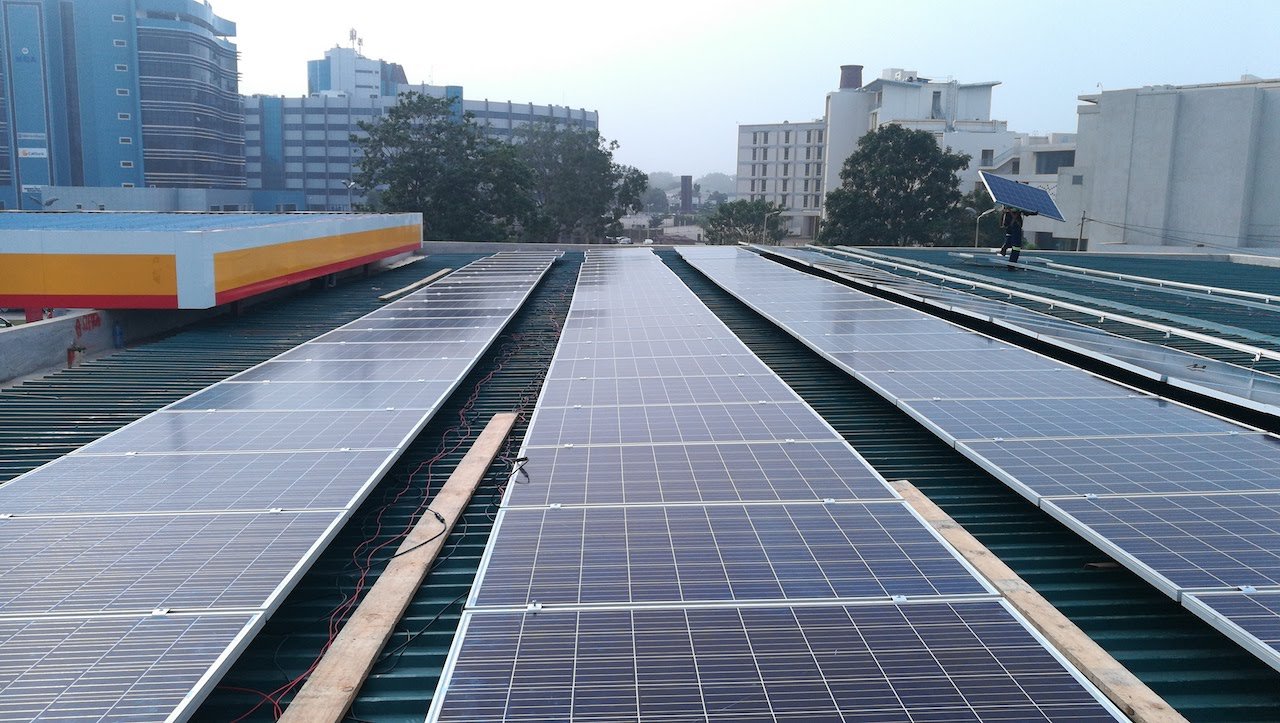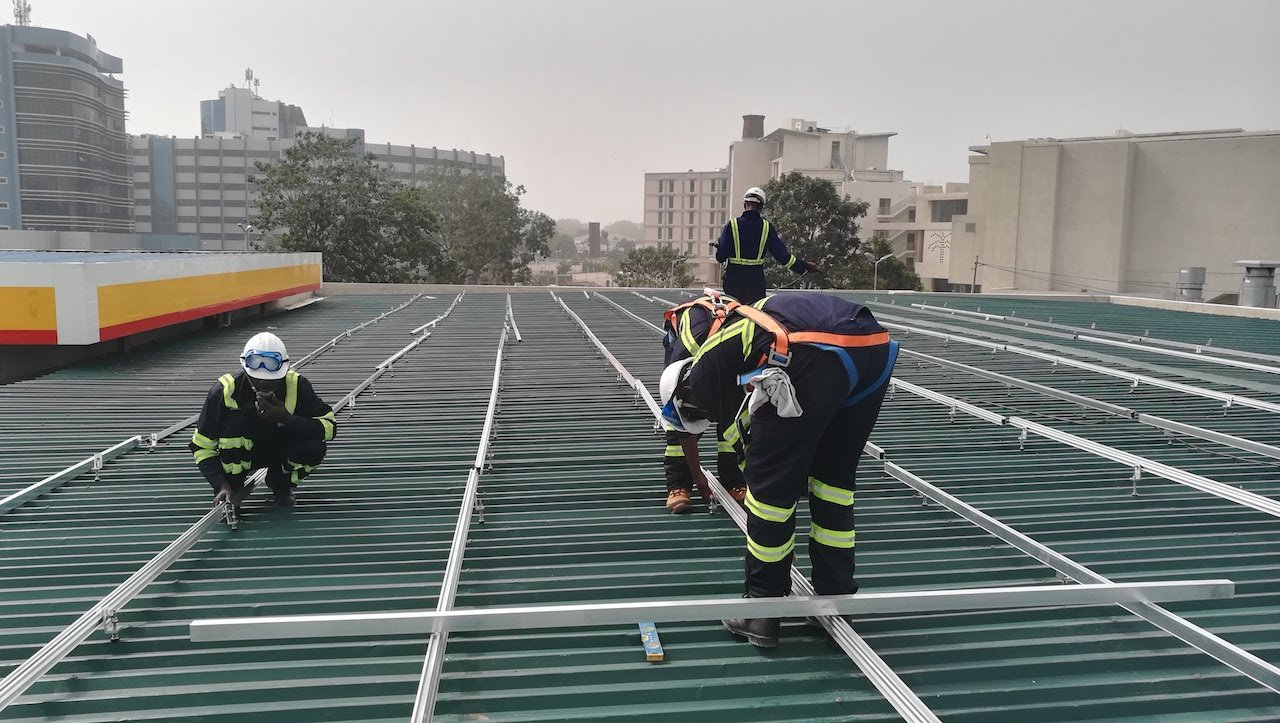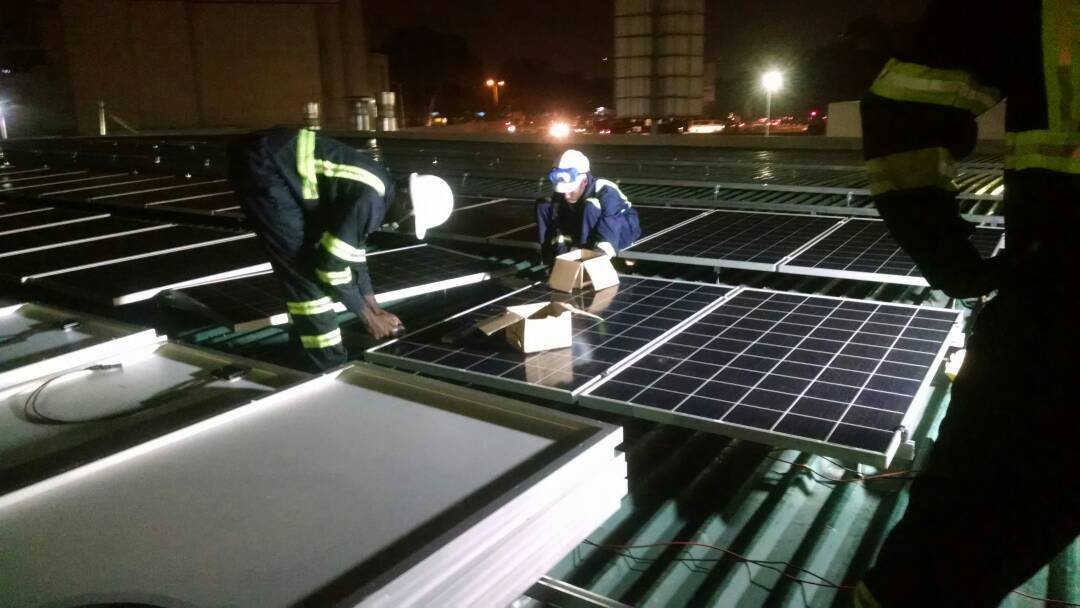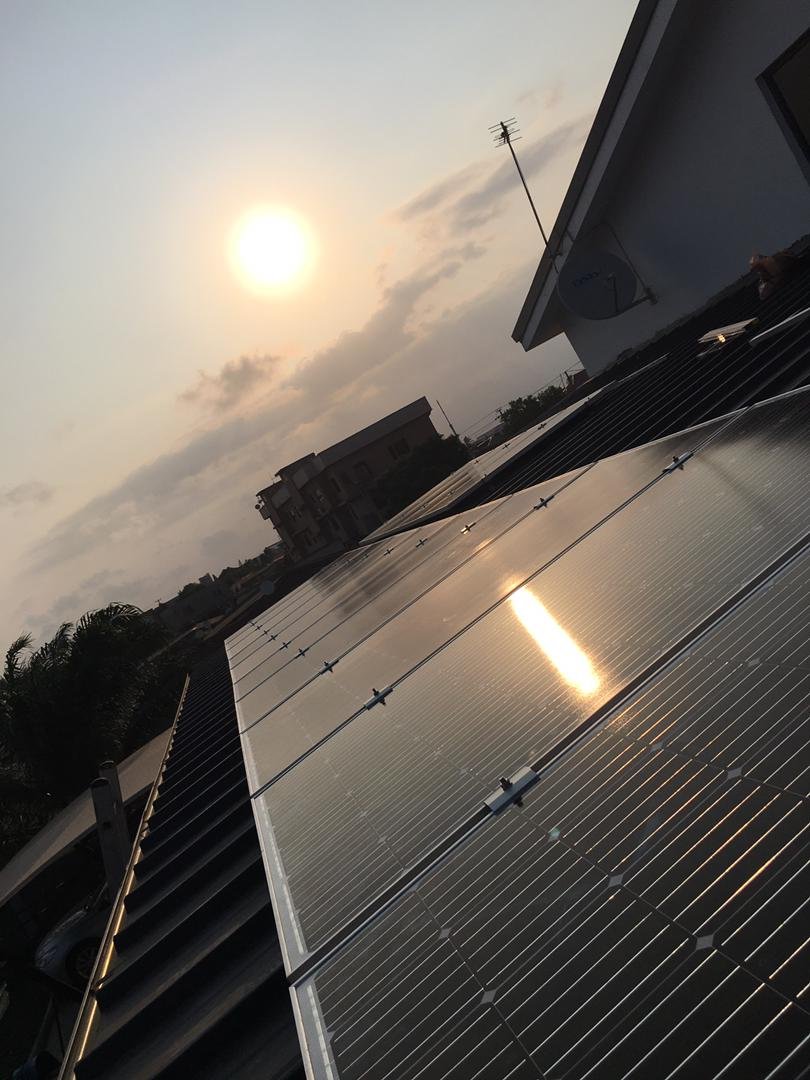Solar Light provides systems and services for the following:
- Households:- Lighting systems, power for TVs, fridges, and other small appliances
- Offices and shops:- Lighting and power for computers, fax machines, and telephones
- Institutions & factories:- Room lighting, emergency lights, passage lights, small appliances.
- Hotels & Guest Houses:- Lighting for rooms and passages, emergency lighting, fans.
- Churches & Community Ctrs:- Power for lighting, ventilation, and small public address systems.
- Remote homes, stations, clinics:- Complete power for lighting and small appliances.
A Typical Household System
Solar panels collect sunlight and convert it into electrical energy, and a battery stores the energy produced in the daytime for use at night. Appliances consume the electricity produced.
Wires are used to connect the system together, and a controller may be needed to regulate the charge on the battery. If the user wishes to use ordinary household appliances, and inverter is used to convert the battery power into alternating current (AC).
Components of a typical home-based PV system.The capacity of your system is determined based on the household size and the number of appliances to be used.
PV system sizes and their approximate capacities.






